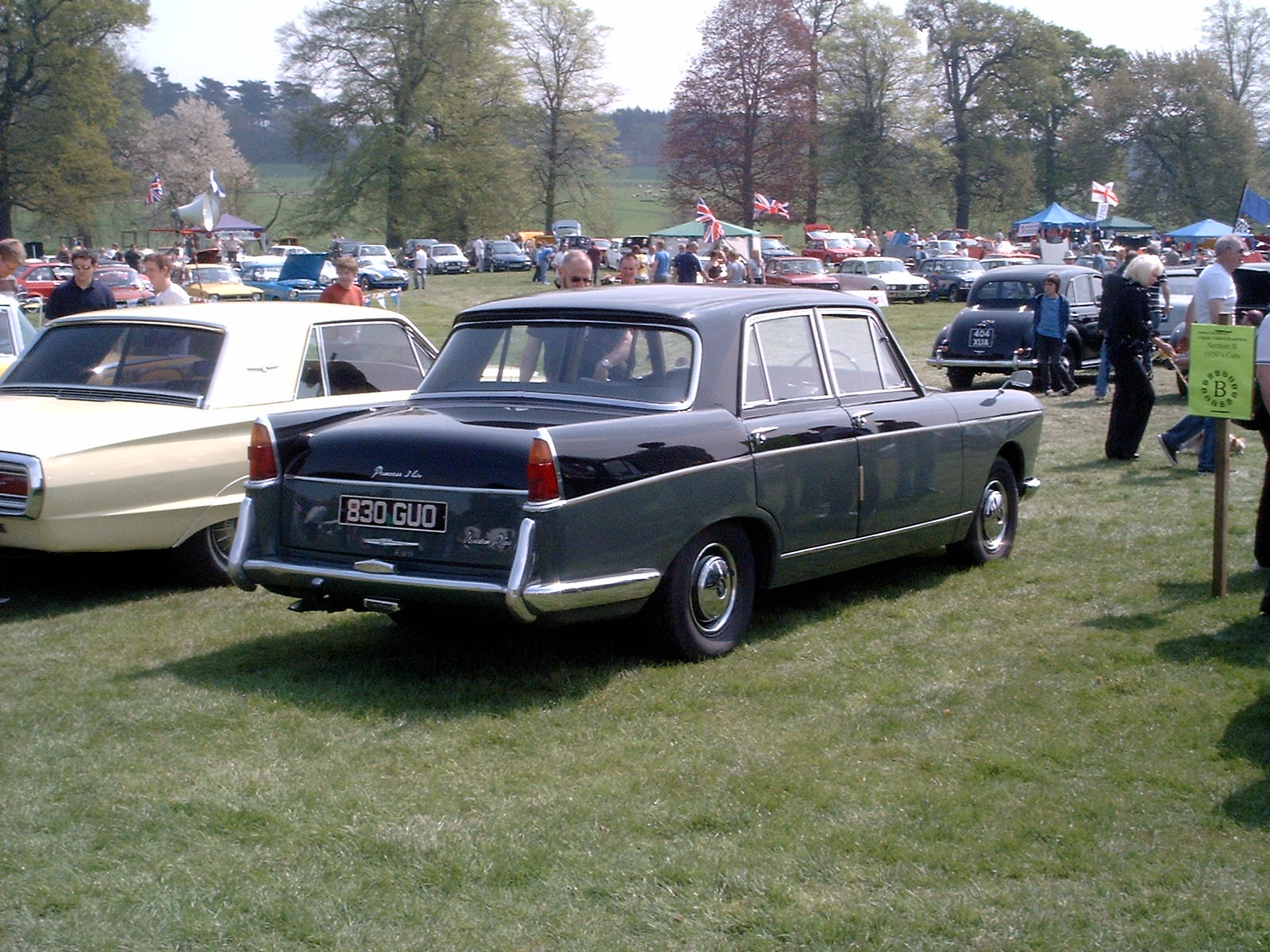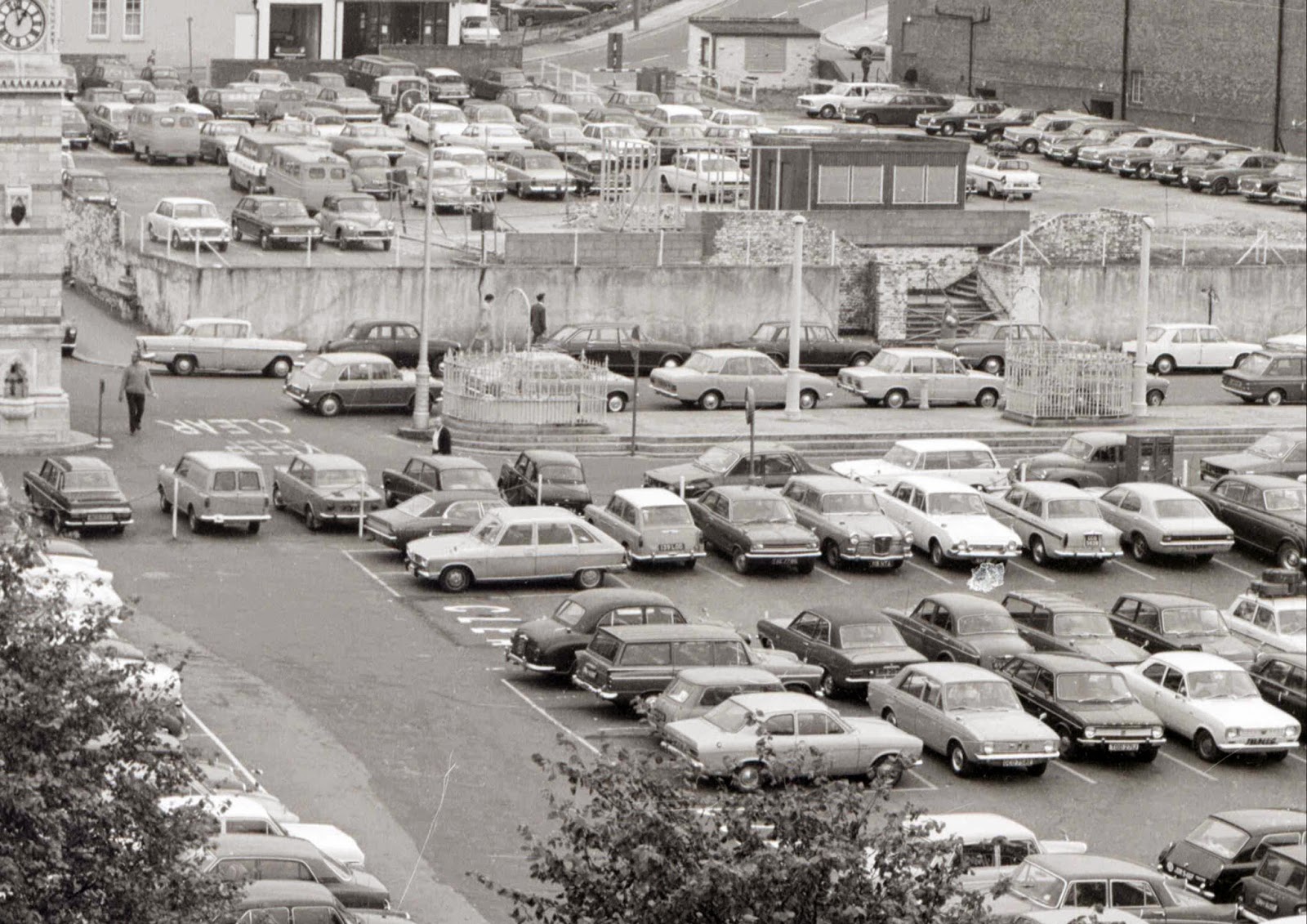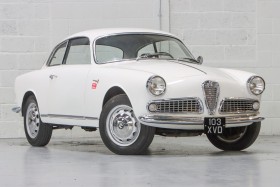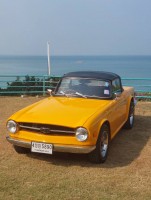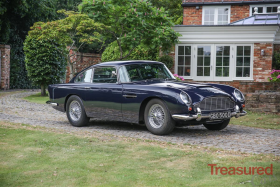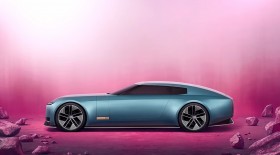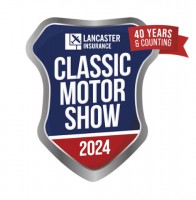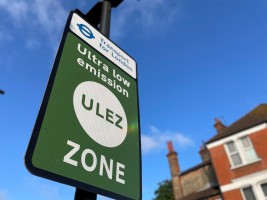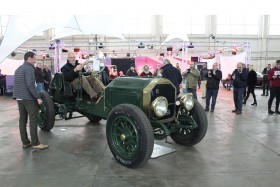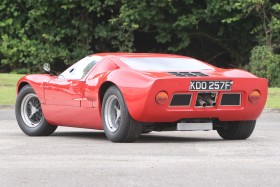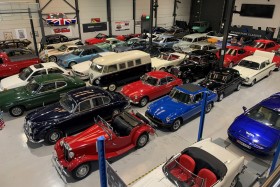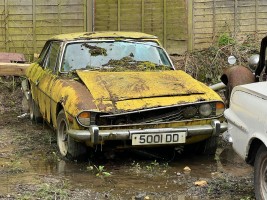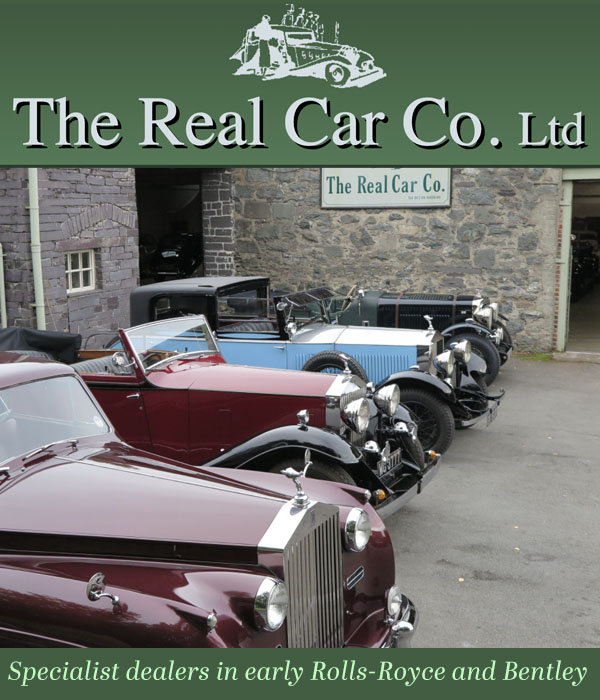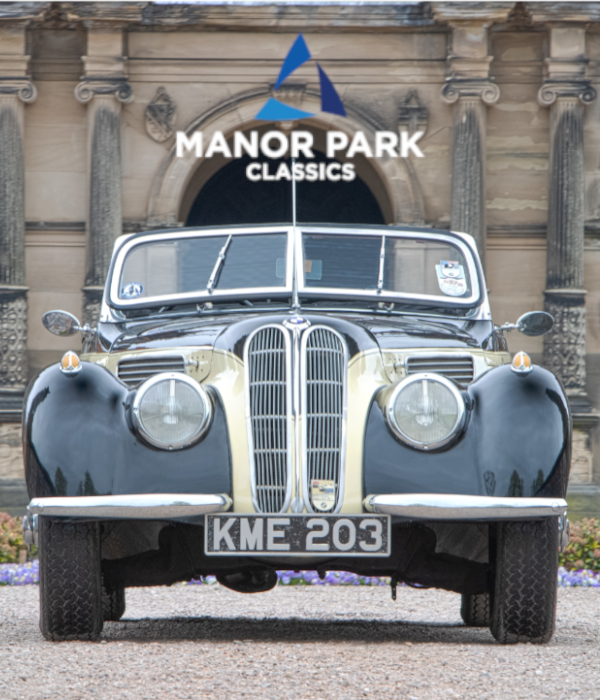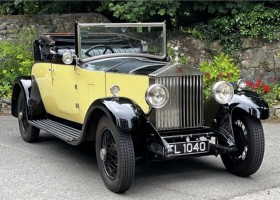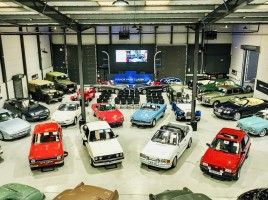in search of the golden years of mass motoring in the uk
By: Terry Burgess Sat, 15 Jan 2022
Features
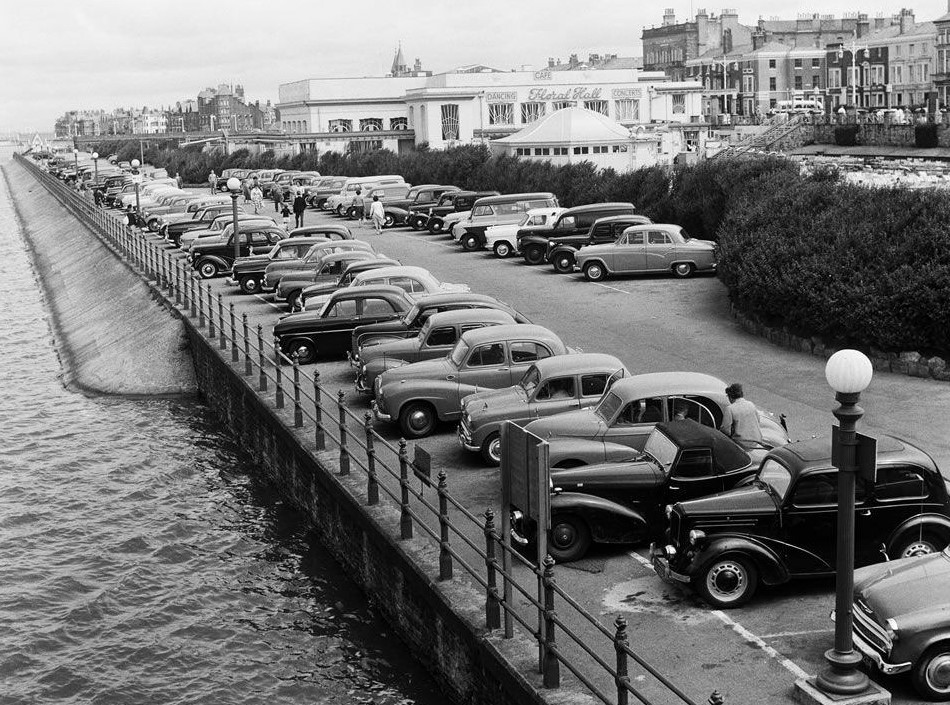
I am of that generation which experienced the age of mass-motoring first-hand, pretty much in its entirety. We were only children at the beginning, but most of us began driving at 17 and we stand a good chance of finishing our motoring days in an internal combustion-engined vehicle if we so choose. My late father's generation did not have a general expectation of car ownership as a rite of passage into adulthood. My son's generation will not have the expectation of completing their motoring days with petrol or diesel engines. There are even suggestions now that private ownership of cars should cease before too long.
I do not include the pre-WWII years as a part of the age of mass-motoring. Although cars had become a more popular and inexpensive form of transport in the UK by 1939, the masses still relied largely on their feet, the bicycle, the tram, the bus or the train to get around. After the war, the situation was slow to change. Cars were relatively expensive and in short supply. The masses didn't use them very much. The British motor industry exported everything it could to hungry markets around the world. The motorcycle industry flourished at this time and there were also numerous producers of inexpensive and economical 3-wheeled cars, many of which used motorcycle-type power units and some of which sold in significant quantities. By the 1960s, the motorcyclists of the 50s were mostly married and had children. Some used motorcycles with side-cars (combinations), some used 3-wheelers, but increasingly they aspired to ownership of a 'proper' car, be it an old Minor, A35, or 100E Ford, or a new Mini or Anglia 105E on hire purchase terms.
By the 1970s, the majority of youngsters skipped motorcycle ownership altogether and bought their first car at 17 or 18, beginning a motoring career likely to last 60 or 70 years.
That 'baby-boomer' generation has taken car ownership for granted. We wonder at today's youngsters, many of whom neglect to learn to drive until perhaps they find it a necessity in connection with their occupations. With increasing restrictions on parking in towns and cities, together with congestion charges and ultra-low-emission zones, urban-dwellers often don't regard car ownership as desirable or affordable. If they do learn to drive, they may hire a vehicle when they need one.
It is my generation alone who can look back at the whole period of motoring from the 50s to the present day and determine which were the golden years of mass-motoring. I use the term 'golden years' because it evokes nostalgia, which itself is so much a part of the classic motoring scene. In conversation we all hark back to the 'good old days'. We try to rediscover those days by owning and using old cars. There is certainly something to be said for the experience of using a 1950s car in the 2020s. It is evocative. A couple of years ago I had a 1955 Morris Cowley, which, being around the same age as I was, took me into an era of which my recollections are slight, but I did own a 1955 A30, 1951 A70 Hereford, and 1955 Anglia 100E during my youth, in the 1970s. Do such cars represent the 'golden years'? What can be said for them? They are all representative of the post-war era of full-width body styling and independent front suspension. None of them could be described as having high performance and all were quite roly-poly with mediocre steering and braking. The interiors were not luxurious, with large areas of painted pressed steel and very plain trim. The body styling could hardly be described as dynamic; like so many 50s cars, they were rounded, dumpy and quite unromantic. Few survived far into the 1960s, due both to the ravages of corrosion in their mud-trap bodies and their relative mechanical frailty, although in the latter respect they were a great improvement on pre-war designs. Of course, there were more exciting cars in the 1950s, such as the Jaguar XK120, the 2.4 Litre (MK 1) and the Marks 7, 8 and 9. There were also the big Healeys, the MGAs and the Triumph TRs, but really these were not for the masses. In fact, they were mostly for export to the United States. Have I nothing positive to say about the British mass-market cars of the 50s? Such cars do have their appeal. It goes beyond the fact that our fathers, grandfathers, uncles or family friends had them, although for some that seems reason enough to want one now. That rounded, dumpy styling was friendly and unpretentious. Those rather plain interiors, often with small windows, were somehow quite cosy and had a simple functionality. How charming was the interior of the Austin A30/A35, with its cute centrally-mounted instrument unit and the illuminated turn-signal knob above? The materials used inside those cars were quite simple and often durable with plain door-cards, horse-hair stuffed seats with either Rexine or leather pleated facings, cloth head-linings and those steel fascias with their charming touches of chrome, such as the aircraft silhouette on the early E-series Wyverns and Veloxes. Although most 1950s cars proved not to be particularly durable, many of them had an honest, unaggressive character which is quite endearing. They looked perfectly at home with their black, grey or pale green paintwork in the unspoilt villages of the time. The Volkswagen Type 1 (Beetle) and the Citroen 2CV, whilst sharing these characteristics, had other virtues which ensured their survival into the late 20th century and beyond. As the turn of the decade approached, American and Italian styling influences saw our cars becoming longer, lower and wider with increasingly flamboyant colour schemes both inside and out. Much use was made of bright metal and more aggressive styling with large, striking radiator grilles and tail fins. Mechanically, not much changed, although compression ratios went up as higher octane fuel became available and engines increased in size. The propensity to rapid corrosion, if anything, worsened and as the engineering became more adventurous, with the advent of front-wheel-drive on BMC cars, for example, reliability and durability became even more woeful. The quality of mass-produced cars in the 50s and 60s was actually quite abysmal. The Consumer Association's Which? Car Supplements of the early 60s show that all cars from the major British and most continental manufacturers were delivered with a catalogue of defects, even after a dealer pre-delivery inspection, and many suffered serious failures of major components during their first year on the road. That being the case, new car buyers were frequently disappointed with their hard-won vehicles, which often required garage attention during the all-too-short maker's guarantee period and quickly showed signs of rust and pitted chrome. Ford offered only a 6 month warranty on new cars in those days! Even 3 or 4 year-old used cars might soon need a major engine overhaul, attention to the gearbox or panel replacement due to corrosion, so buying second-hand was a minefield, without the further difficulty of finding an honest dealer who hadn't wound back the odometer or filled the gearbox with sawdust! If you can get hold of a copy of 'The Autocar' from the early 60s and read the classified used car adverts, then a year-old Ford Consul at £625 might seem a real bargain, but that is the greater part of £15000 in today's money, for what was a very basic, slow, and rather uncomfortable car. 'Which' found it to be the worst finished and least comfortable of the medium-sized cars they tested in 1961-2, coping badly with steep hills and having a poor handbrake and heater. At a year old, it would already be rusting. My father had a 1960 Consul MK2 which was already seriously rusted in the sills, front wings and door-bottoms when he paid £340 (£7274) in 1965, all masked by filler and Holts Duplicolour!. Not untypical. The column gear change also jammed in second from time to time, requiring a stop to open the bonnet and reset the linkage; again, not uncommon. The very successful BMC 1100s were sometimes known to fail their first MOT at 3 years old due to corrosion and serious rusting where the bulkhead joined the floorpan cost people their lives when those popular family cars folded up in collisions, by which time they might be on their second or third gearbox. The F-type Vauxhall Victor, which had quite remarkably exciting styling in the American fashion, was legendary for showing serious corrosion inside the first year or two. Owners reported to 'Motorsport' magazine that their cars had been painted over rusty metal from new! Exports of the Victor to the North American continent went extremely well until the cars quickly deteriorated, particularly in Canada. One of the leading imported cars in the UK was the Renault Dauphine. Few survived the British climate for long and after great initial success in the USA, there were soon 50,000 unwanted Dauphines on the US docksides, as no finance companies would lend American buyers the cash to buy a car which would soon be almost worthless, so rapidly did they fall apart! At that time, it was only the Volkswagen that offered the masses a car that was well constructed, well engineered, durable and reliable, hence its success worldwide. The Citroen 2CV wasn't nearly so durable and, during the 50s and 60s, offered a very modest performance with power rising from 9bhp to 18bhp on the 375cc and 425cc versions! It was absent from the UK market from 1960 to 1975, by which time it had 602cc and 29bhp. Other leading UK imports of the 50s and 60s were the Fiat 500 and 600 models. These small cars had a good reputation for mechanical strength, but were prodigious rusters! Returning to UK-built cars, we have the famously successful Ford Cortina Mark 1, well known in its day for requiring steel plates to be welded to the inner wing top suspension mountings, lest the front suspension struts pop through on a bump or under braking, destroying the bonnet lid. The 1200cc engines were very prone to sludging and premature failure of the main bearings. All this and more from cars of most makes costing serious money in their day, which usually required servicing at 3000-mile intervals.. Showroom to scrapyard in 7 to 10 years was by no means unusual. From a high point of styling in the late fifties and early sixties, cars became increasingly plain and boxy during the mid-sixties, but style began a renaissance in the late sixties with the 'coke bottle' Vauxhall Vivas and Victors and Ford's Capri. Build-quality and reliability, however did not improve. The Japanese arrived in the UK market with competitive and well-equipped models which were discovered to be remarkably reliable, quickly stealing sales from the appallingly strike-prone British manufacturers. However the oriental cars were made from thinner, stiffer, higher carbon steel which rusted through even more quickly than the British stuff! Spare parts were also very expensive and, sometimes, difficult to obtain.
As the 60s became the 70s, we were treated to new cars, such as the Avenger, Cortina MK3 and Marina. Fresh looking as they were, they had their faults. The Avenger, whilst not being very exciting, was fairly reliable although 3rd gear synchromesh commonly failed, back axles whined and the lower body panels could rapidly show surface rust. The new Cortina was well received, but prematurely worn, knocking overhead camshafts were legion, rear axle 'void' bushes a pain, and rusting bodywork came as standard. Cars finished in 'Daytona Yellow' were a disaster, as the paint simply peeled off! The Marina, a hastily conceived 'parts-bin special', intended to compete in the fleet market, handled and rode as you might expect on 1948 Morris Minor suspension, rusted with the best of 'em and suffered from 2nd gear synchromesh woes and axle tramp. It sold quite well.
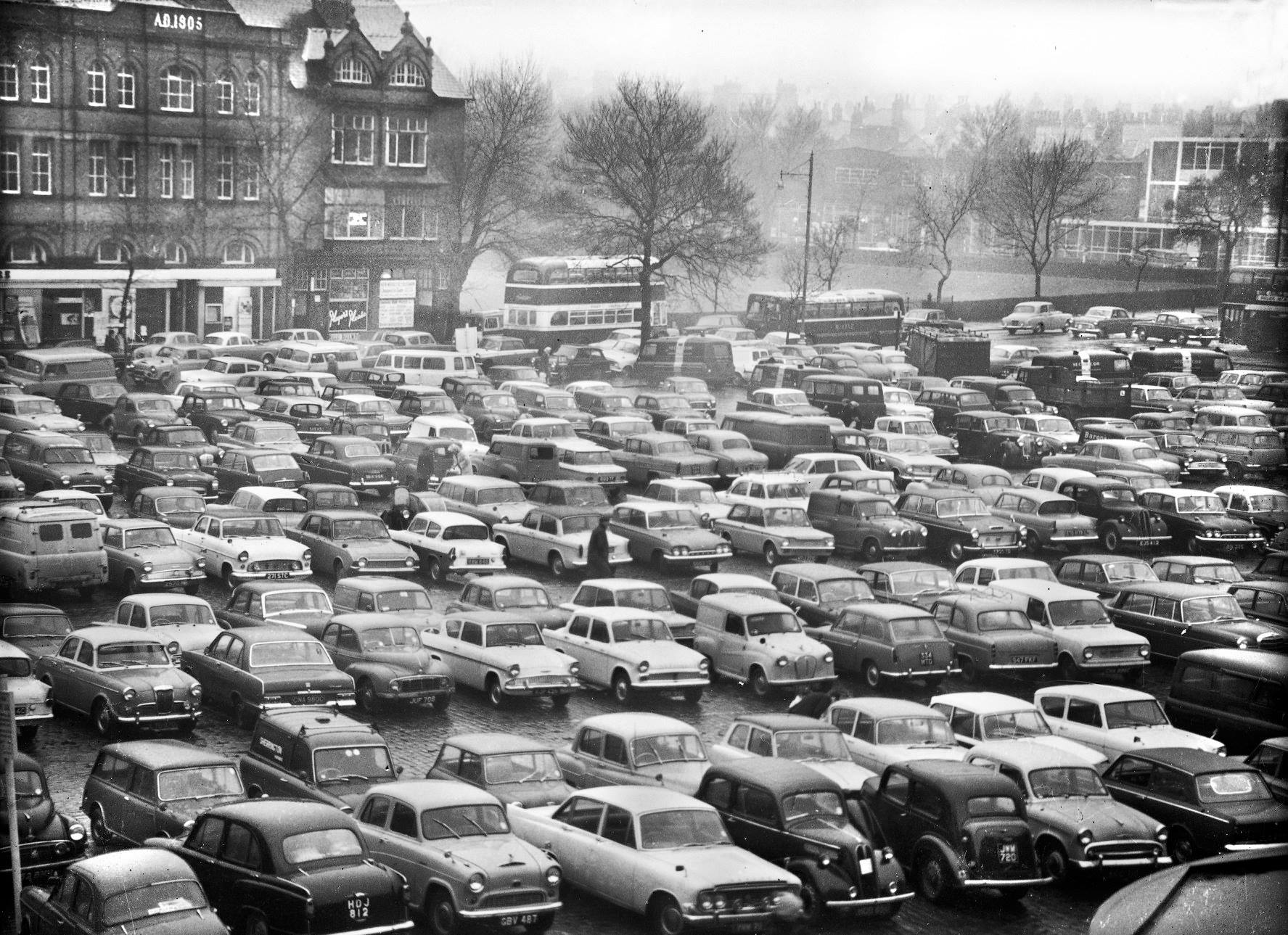
At around this time I passed my driving test and began the hunt for a car of my own, with very limited funds. In those days the local newspaper, newsagents' small ads boards and the Exchange and Mart were the main places to look. Bearing in mind the poor quality of new cars made in the previous 20 years, it can be imagined just how awful were the second-hand cars from which I must choose. There was another issue. As car ownership had rapidly increased during the post-war period, so the total quantity of old cars available to the ever-increasing number of impecunious buyers in successive decades was unfeasibly small. As a result, prices were artificially high and quality was abysmal. Many 'cheap' cars offered for sale, even by private owners, had MOT certificates which they did not deserve, issued by testers who were often on first-name terms with the owners and, not necessarily on payment of any additional fee, would indulgently turn a 'blind eye' to serious corrosion, dodgy handbrakes and sloppy steering. I know this from experience! Then there were the cars with 'bent' MOTs, obtained on payment of a 'fiver', sometimes from a pad of stolen certificates in the pub, sometimes from the testing garage. Certainly, many of my early cars would not have passed an MOT today and should not have passed then. The lowest price of cars in the 'paper' was about £25, for which you might get a rather poor example of an Austin A30. Such a car would be running, but the engine, gearbox and back axle would all show their age, wheezing, crunching and whining. The brakes would be barely adequate and the bodywork would be a mess, often with hand-painted areas and plenty of rust. Holes in the floor were to be expected. £25 in 1972 would be £376 today. For that amount, I could be struggling to find a worthwhile car today, but I might find a rust-free one that maybe needed a clutch!
What I actually bought was a scruffy 1962 Ford Consul Classic 315 1340cc base-model, with a long MOT for £53 (£800). It needed a new radiator which cost £11 (£166) . The engine was very tired and copious amounts of fume emanated from the oil filler-breather cap and crankcase breather, creating a blue fog when waiting at traffic lights. During my fairly brief ownership it blew a head gasket and started jamming in first gear, so that I stopped using it! To improve the car, I spent money on a 'fibreglassing' kit, body filler, a large can of 'Winfield' tangerine gloss paint, and a small can of matt black paint. A further £39 (£587) were spent on wide wheels and tyres, a 'rally' steering wheel, tachometer and 'sports' air filter! The result: a clapped out, hand-painted, seriously corroded, slow, noisy, wreck of a car, which I regarded as seriously 'cool', costing at least £1553 in today's money! Tax cost £25 per annum, but I bought it in 4 month lumps at £9.15, so a year actually cost me £27.45 (£415). Not cheap! Insurance was £40 (£600) for third party only which isn't so bad compared to what young drivers pay today. However, most young drivers today have cars which do 90-plus mph and 0-60 in under 15 seconds, which in 1972 would have put them in a high insurance group, with premiums of over £1000 in today's money. After thrashing the Classic unmercifully for a few thousand miles, I removed the wide wheels and other extras to sell it on with 6 weeks MOT remaining for £40 (£602)! I bumped into the new owner a little later and she complained that it did only 20mpg. That brings me to another point. Fuel. Diesel cars were almost unknown back then. Petrol was typically 35p (£5.27) a gallon or 7.7p (£1.16) a litre. We are now paying about £1.45 a litre, but it is easy to buy a cheap car which will do 45mpg, so, mile for mile, it should be cheaper to run a cheap petrol car today, fuel-wise. If you can find a cheap, reliable diesel, you could be looking at 60 or 70mpg.
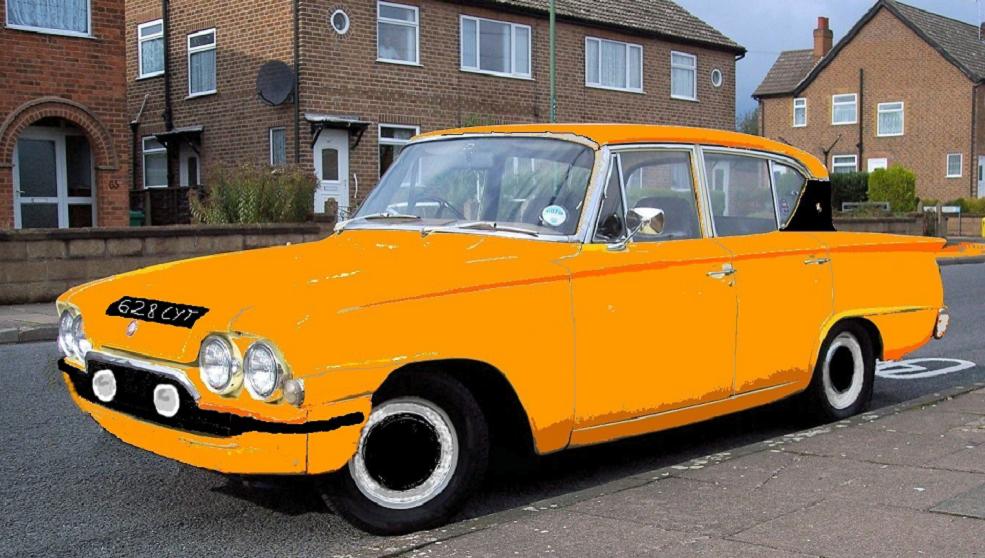
As the 70s wore on, and they were wearing, with two fuel crises, spiralling inflation, almost unprecedented industrial unrest and decline, a three-day week, IRA bombs in London, and the Bay City Rollers, to name but a few, the front-wheel-drive hatchback began to dominate the new car market, overhead camshafts and toothed belts became widespread and electronic ignition began to replace points and condensers. Steel-belted radial tyres became the norm, which was no bad thing, as they lasted far longer and gripped far better than the old cross-plies. These technological trends had some negative consequences for the DIY mechanic. Although the traditionally engineered cars of the 50s and 60s were badly-built and unreliable, their mechanical and electrical faults were usually quite easy to fix. When electronic ignition failed, there was no roadside remedy. Replacing the clutch on many front-drive cars was a tricky operation. Snapped timing belts could destroy an engine. When fuel injection began to replace carburettors in the late 80s and early 90s, the average home mechanic became nonplussed! The introduction of catalytic convertors created another potentially expensive trap for the buyer of second-hand cars. At the same time cars were becoming harder and harder to distinguish one from another. If badges and grilles were removed, it really was hard to tell them apart. On a positive note, rust was becoming less of a problem. Further benefits were the improvements in standard equipment with 5-speed gearboxes, power steering, electric windows and central locking all becoming fairly normal on medium-sized cars. Fuel injection and better aerodynamics also gave more performance with better economy. Cheap diesels were still hard to find in the 90s, having represented only 5% of sales in the 80s, but as we entered the 21st century there were plenty to choose from. The problem was that good though many modern cars were, when problems occurred they were frequently very expensive to fix, particularly as digital electronics increasingly controlled all aspects of the car's functions, including the now ubiquitous ABS. Immobilisers and alarms abounded, making car theft much more difficult, but all too frequently these features made it impossible for the owner to take his own car anywhere. Rather than being scrapped due to terminal corrosion, many 21st century cars have been rendered beyond economic repair by an accumulation of electronic malfunctions or perhaps simply by the need for a new clutch with dual-mass flywheel (DMF) and a £1000 price tag. The modern diesel may not be the reliable old slogger it used to be with frighteningly expensive high-pressure pumps or injectors, not to mention diesel particulates filters (DPFs). It's easy to buy a lovely looking car with a few warning lights on and face a multi-thousand bill to put it right, even though it's running just fine. Modern cars can be incredibly reliable and long-lasting, but it has been a bit of a lottery. The second-generation Renault Megane (with the interesting derriere) gained a dreadful reputation for electrical fragility, but I ran a 2007 1.5Dci for nearly 30 thousand miles from 2018 to 2019 with very little trouble. It had 127000 on the clock when sold.
From the 60s to the 90s there was a period of 'alternative' motoring for the less affluent, with the importation of models from the Communist Bloc countries, which were sold in the UK at artificially low prices. These embodied somewhat dated technology and were of dubious quality, but offered the prospect of new car ownership at second-hand prices. Depreciation tended to be rapid, as did deterioration, but that meant used prices were extremely low. Skodas, Wartburgs, Moskviches, Ladas, Polski-Fiats (later rebranded FSOs), and Zastavas (rebranded as Yugos), all offered something a bit different with old technology that was usually easier for the DIY mechanic. The Ladas, Polski-Fiats and Zastavas were essentially old Fiat models, although the Ladas had heavier bodies and OHC engines, whilst the Polski-Fiat 125P was essentially a Fiat 125 with an even older Fiat 1500 push-rod engine. The later FSO Polonez had the 125P floorpan with unique Giugiaro-designed upper body work and a Fiat 131 fascia and windscreen! Zastava created their own hatchback conversion of the old Fiat 1100/1300 and later introduced a Giugiaro-designed rebody of the old Fiat 127 as the 45/55/65. The Skoda rear-engined cars were totally original designs, whereas the two-stroke, three-cylinder Wartburg was a development of the post-war IFA F9, originally designed by DKW. In truth, whilst the technology often harked back to the 60s, so did the quality of construction, but the Ladas and Skodas sold very well. Optimistically, you might have regarded them as brand-new classic cars!
You may be wondering if I have any conclusion. What were the 'golden years of mass-motoring'?
It is hard to argue that the 50s and 60s were, because the cars were so badly made and often had major design defects, such that car ownership could be very disappointing and expensive. However, there was variety and character. Cars of that time were instantly recognisable, not only by appearance, but also by the sounds they made. There were many configurations: front engine, rear wheel drive; front engine, front wheel drive; rear engine, rear wheel drive; air-cooled, water-cooled; two-stroke, four-stroke; two, three, four, and six cylinder. V8s weren't for the mass-market in the UK. There were also plenty of saloons, convertibles, estates and coupes, but not many hatchbacks. Although the cars rusted rapidly,went wrong and wore out, most of them were easy to repair, with breaker's yard parts, if necessary. Rust was the curse, as we didn't have DIY mig-welders back then. Those old cars were also fairly easy to modify, often using parts from later or sportier models. In some ways it was the best of times and the worst of times! Many cars of the 70s are best forgotten. As we went into the 80s cars did become more efficient, but sadly, the character was lost and by the 90s you could hardly tell one from another as they became more and more expensive and harder and harder for the amateur to repair. For the young motorist, it seems that there is little to choose from other than small front wheel drive hatchbacks, which are rather boring. Looking back at the variety I enjoyed in my first few years, I have felt sorry for the young of the last 20 years. As an old codger with the advantage of cheap insurance and (for cars over 40 years old) free tax and, more recently, MOT exemption, I've had some golden years with a huge variety of old cars over the last two decades, most of which have returned a profit and I've had golden years with some really effective modern cars, a few of which have also returned a profit.
After that surprisingly good experience with the Megane, I bought a 21000 mile, 2015 Renault Twingo MK3. The rear-engined 1.0 Sce70 Play in powder blue is an absolutely delightful car with many retro touches to its styling and, I repeat, a rear-mounted engine! In 30 months and 28000 miles it has given me no trouble whatsoever, with the exception of the digital fuel gauge needing reprogramming after two weeks, free of charge. I find it to be a near-perfect car for my requirements, improved greatly by both a custom-made footrest and central storage box. The original dug into my left leg! After six and a half years the bodywork is unmarked and it runs like new, using no oil between changes, which I carry out early, at 10000 miles. It averages about 50mpg (55 on a run) and is satisfying to drive. More golden years!
I bought the Twingo to satisfy my appetite for a really nice powder blue Volkswagen Type 1 Beetle in a modern, practical way. Then, last September, I bought a 1973 powder (Marina) blue VW1300 with a 1600 conversion and nice Empi alloy wheels. Never welded and 41000 miles! More golden years ahead, I hope!
We also have a 2000 Range Rover 2.5DSE Automatic, which has done over 4000 miles in the year we've had it. The electronics are a bit of a challenge, but on the whole it's been a golden year! But that's hardly mass motoring, or is it?
There are aspects of mass-motoring upon which I haven't touched at all. The roads of the 50s and 60s were often horribly congested due to the lack of motorways, dual-carriageways and bypasses. On the other hand, there was no national speed limit before 1965, so you could go as fast as you wanted in your Ford Popular(!) and we weren't subjected to the dreaded, cash-cow speed cameras which plague us today and feed our growing paranoia. We were generally free to enter towns and cities and park where we could, whatever we were driving. It's hard to separate the nostalgia for our youth and our family and neighbourhood memories from our actual motoring experience. There's no doubt that I appreciate my Beetle for the classic style and unique character it embodies, but also for the fact that it drives and rides in a way that is totally acceptable in modern conditions. It is a car which I could use everyday if need be, although not very economically. There are relatively few really old cars of which I could say that.
In the end, I have to say that there have been golden nuggets all the way through my years of motoring as a member of the masses, including a day trip with my young family from Watford to Littlehampton and back in a single-cylinder 1962 Bond 250 G Minicar, in 1982! As a child, I thrilled to simply sit in my uncle's magnificent Vanden Plas Princess 3-litre Mk2 Automatic and PAS, reading the padded handbook and inhaling the aroma of Connolly hide. Five years later it was the first car I ever drove on the road, with L-plates, by which time the driver's door was tied shut with rope to prevent it falling off, so bad was the corrosion at 9 years old! I've since had two VP 3-litres of my own. There's no doubt that us baby-boomers have been a privileged generation when it comes to motoring. We've been able to live it all and relive it, but it's never quite the same the second time around.



